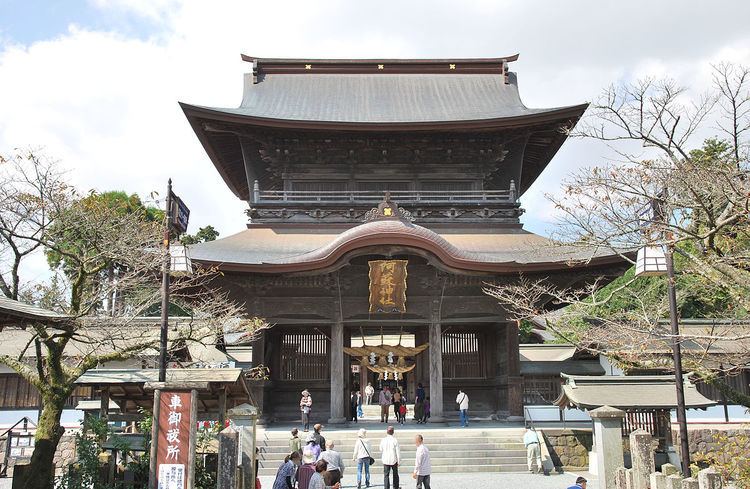Phone +81 967-22-0064 | ||
 | ||
Similar | ||
Japan s kumamoto castle aso shrine destroyed by quake
Aso Shrine (阿蘇神社, Aso-jinja) is a Shinto Shrine in Aso, Kumamoto Prefecture, Japan. Aso is one of the oldest shrines in Japan. This shrine holds several Important Cultural Properties, including Ichi-no-shinden (一の神殿), Ni-no-shinden (二の神殿), and Rōmon (楼門).
Contents
- Japan s kumamoto castle aso shrine destroyed by quake
- Earthquake destroyed aso shrine japan
- History
- Shinto belief
- Related shrines
- References
The Aso Shrine was heavily damaged in the 2016 Kumamoto earthquakes. The shrine's rōmon (tower gate) completely collapsed. The haiden (worshiping hall) also collapsed.
Earthquake destroyed aso shrine japan
History
Aso Shrine at Mount Aso in Kyushu is traditionally held to have been a center of worship before the accession of Emperor Jinmu. The shikinaisha shrine complex at Ichinomiya in what is today Kumamoto prefecture was said to have been established in 281.
Records link the founding of the shrine to the reign of Emperor Keikō. By the middle of the 11th century, the shrine was involved in national issues as they played out across Kyushu. During the ascendancy of the Kamakura shogunate, the Hōjō clan exercised a significant influence over the affairs of Aso Shrine.
The shrine is dedicated to the veneration of Takeiwatatsu-no-Mikoto (健磐龍命), who was a grandson of Japan's first emperor and the brother of Emperor Suizei, the second monarch on the traditional list of emperors. In the same period that Emperor Jimmu was establishing his palace at Kashihara at the foot of Mount Unebi in Yamato province, Tateiwatasu was sent to Aso where he helped establish a number of agricultural communities; and later, he is said to have built a palace at Miyagi.
The original location of the shrine is uncertain because it was destroyed and rebuilt many times in or near the crater of Aso-zan. The present buildings date only from the Tenpō era (1830–1843).
Aso was the chief Shinto shrine (ichinomiya) of the old Higo Province. It serves today as one of the ichinomiya of Kumamoto Prefecture.
From 1871 through 1946, the Aso Shrine was officially designated one of the Kanpei-taisha (官幣大社), meaning that it stood in the first rank of government supported shrines.
Shinto belief
Aso-no-Ōkami, the kami or spirit who is believed to dwell at Aso Shrine has been worshipped from early times as the guardian deity of safety in navigation, and today, Aso-no-Ōkami is seen as protecting worshippers from traffic accidents and other untoward events.
Yabusame is an annual festival which brings together horse-mounted archers, special arrows and targets, and Shinto ritual at Aso Shrine.
The Aso no Himatsuri festival has its origin in the month of March festivals such as Aso no Noyaki (the first burning in Aso) and Aso jinja no Hifuri shinji (the fire ritual of Aso Shrine). Although rarely performed today, ceremonies which honor ancestors who settled near the Aso caldera do continue to be associated with the Aso jinja.
Related shrines
Other Aso shrines include:
